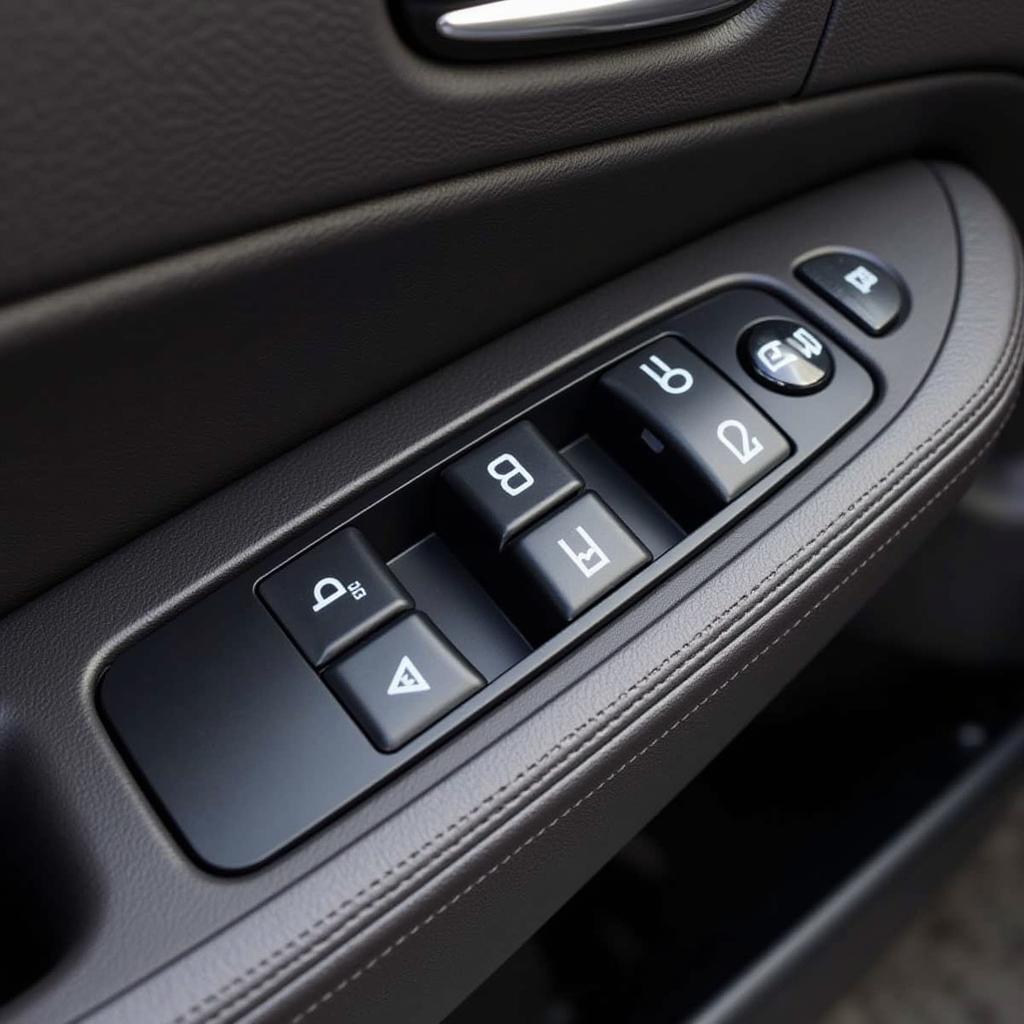You’re driving along, and suddenly a warning message flashes on your dashboard: “Memory Seat Disabled.” It’s understandable to feel a moment of panic. What does it mean? Is your car safe to drive? Is it an expensive fix? Before you jump to any conclusions, let’s demystify this common car warning message and guide you on how to handle it.
Understanding the Memory Seat Feature
Before we delve into the warning itself, it’s crucial to understand what the memory seat feature does. In modern vehicles, this convenient feature allows multiple drivers to save their preferred seat and mirror positions. By linking the memory function to specific keys, the car can automatically adjust the settings for each driver. This eliminates the need for manual adjustments every time someone different gets behind the wheel.
Why is My Memory Seat Disabled?
There are several reasons why your car might display the “Memory Seat Disabled” warning. Here are some of the most common culprits:
- Power Supply Issue: The memory seat system relies on a constant power supply to retain your saved settings. If there’s a problem with the car battery, alternator, or the wiring harness connected to the seat module, it can disrupt the power flow and disable the memory function.
- Faulty Seat Control Module: The seat control module is the brain behind the memory seat system. It receives signals from the memory buttons and controls the seat motors to move accordingly. If this module malfunctions due to a short circuit, water damage, or general wear and tear, it can lead to a memory seat malfunction.
- Blown Fuse: Like many electrical components in your car, the memory seat system is protected by a fuse. If there’s a power surge or a short circuit in the system, the fuse can blow, cutting off power to the memory seat function.
- Software Glitch: Modern cars are increasingly reliant on software, and the memory seat system is no exception. Sometimes, a software glitch in the body control module (BCM) or the seat control module itself can cause unexpected behavior, including disabling the memory seat feature.
 Car Memory Seat Control Panel
Car Memory Seat Control Panel
What to Do When You See the Warning
- Check Your Owner’s Manual: Your car’s owner’s manual is your best resource for understanding specific warning messages. Look up “Memory Seat Disabled” to see if your manufacturer provides additional information or troubleshooting steps.
- Inspect the Fuse Box: Locate your car’s fuse box (usually under the dashboard or in the engine bay) and consult your owner’s manual to find the fuse related to the memory seat system. Check if the fuse is blown. If it is, replace it with a new one of the correct amperage.
- Try a Simple Reset: Sometimes, a simple reset can resolve minor software glitches. Disconnect the negative terminal of your car battery for a few minutes, then reconnect it. This can often reboot the car’s electrical systems and potentially fix the issue.
When to Seek Professional Help
If the warning persists after checking the fuse and attempting a reset, it’s best to consult a qualified automotive electrician or your dealership. Diagnosing complex electrical problems or software issues often requires specialized tools and expertise.
 Mechanic Diagnosing Car Electrical Problem
Mechanic Diagnosing Car Electrical Problem
Tips to Prevent Future Issues
- Regular Car Maintenance: Schedule routine checkups with your mechanic to ensure your car’s battery, alternator, and electrical systems are in good working order.
- Protect Your Car’s Interior: Avoid spilling liquids on or near the seat controls. Moisture can damage the electrical components within the seat module.
- Address Issues Promptly: If you notice any unusual behavior with your memory seat function or other electrical components, don’t ignore it. Early detection and resolution can prevent more significant problems down the line.
“Many memory seat issues arise from neglecting basic car maintenance,” says John Smith, a senior automotive electrician at XYZ Auto Services. “Regular checks and prompt attention to warning signs can save you a lot of trouble and expense in the long run.”
Conclusion
Encountering a “Memory Seat Disabled” warning message can be alarming, but it’s usually not a cause for major concern. By understanding the potential causes and following the suggested steps, you can often troubleshoot the problem yourself or seek professional help when necessary. Regular maintenance and prompt attention to any warning signs will help keep your car’s electrical systems, including your convenient memory seat feature, in optimal condition for miles to come.


